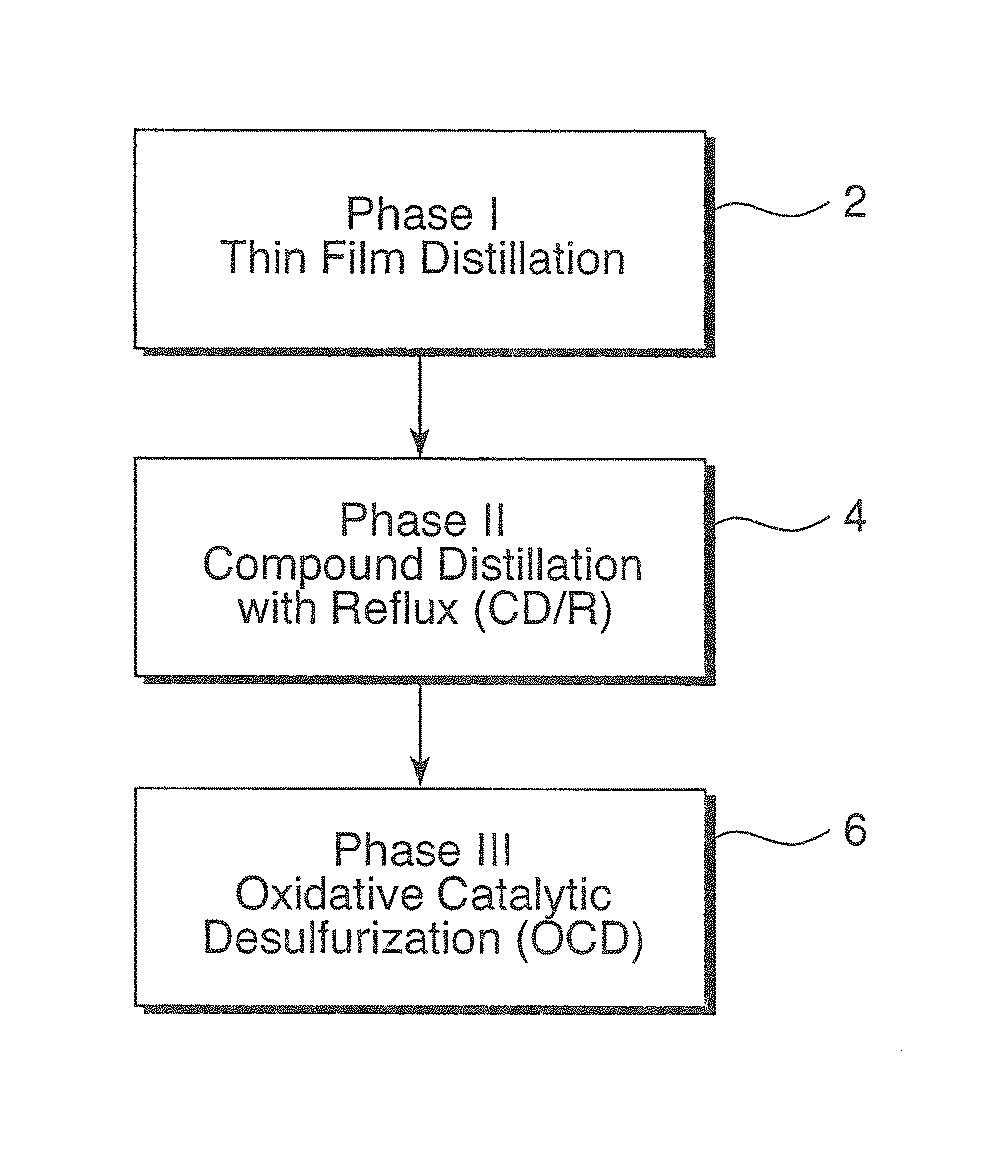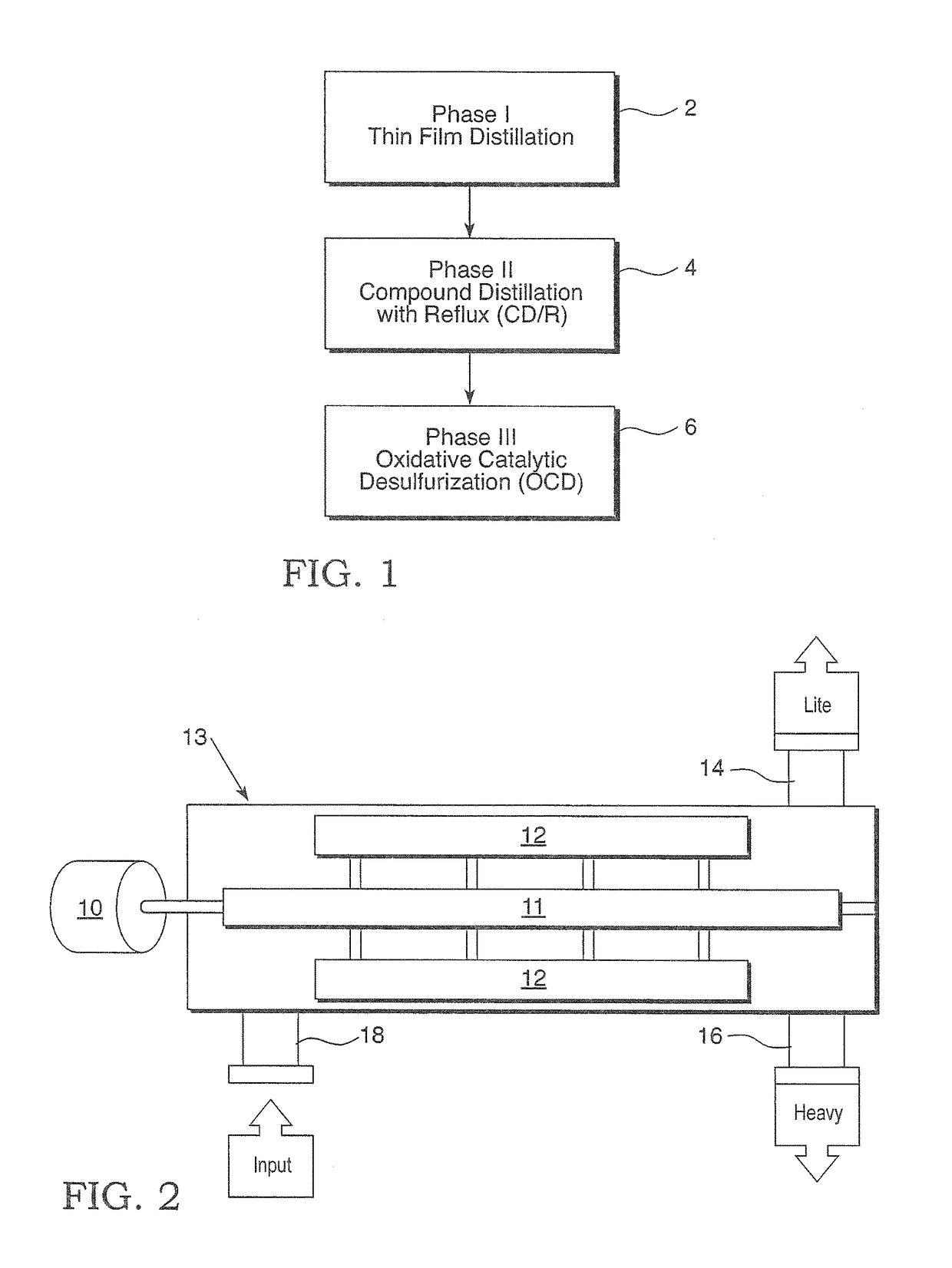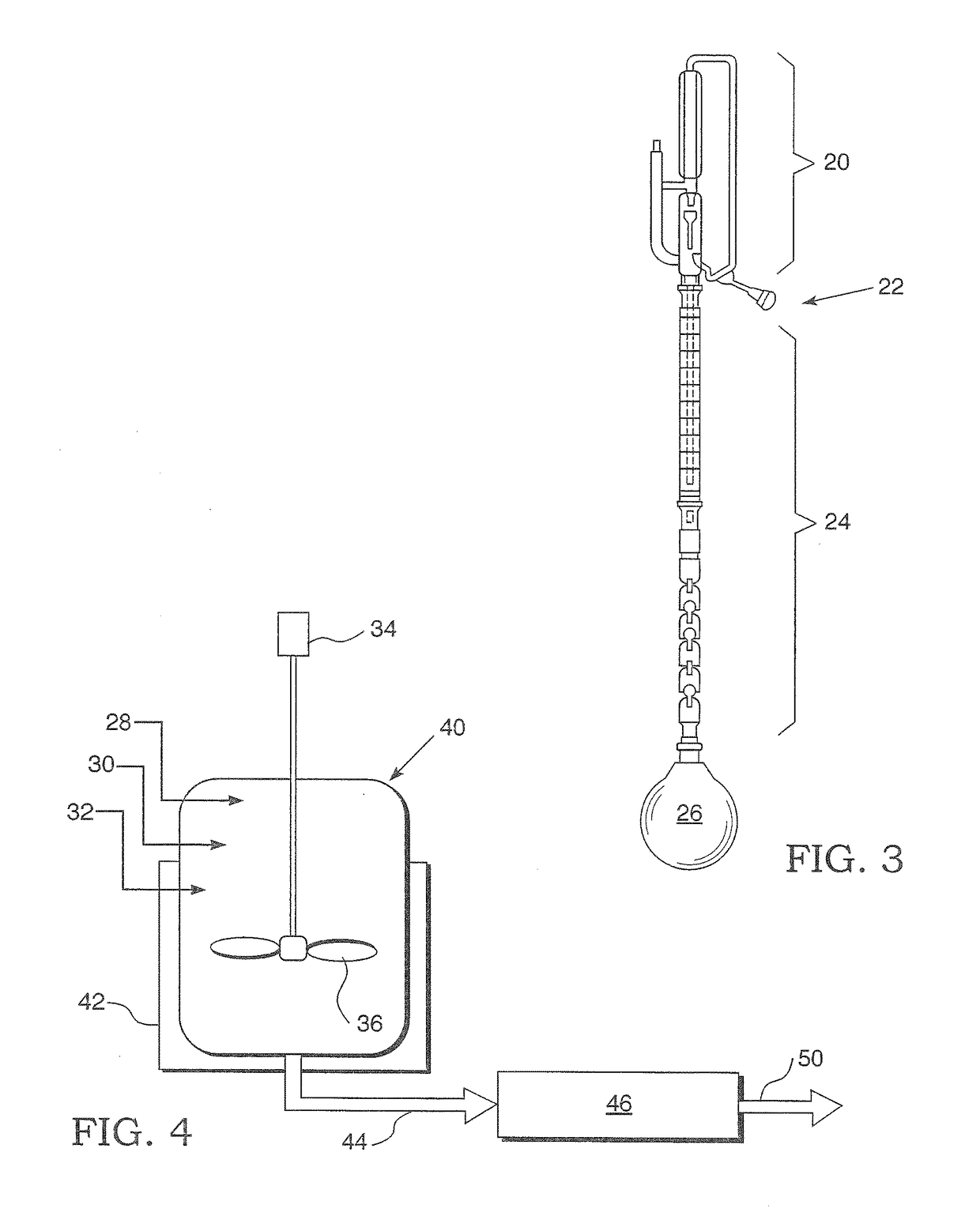Methods of separation of pyrolysis oils
a technology of pyrolysis oil and separation method, which is applied in the direction of hydrocarbon oil treatment products, thermal non-catalytic cracking, coke ovens, etc., can solve the problems of complex mixture of compounds, distillate instability, and failure to yield commercially valuable fractions, and achieve the effect of effective fuel oil products
- Summary
- Abstract
- Description
- Claims
- Application Information
AI Technical Summary
Benefits of technology
Problems solved by technology
Method used
Image
Examples
example
[0038]An example of Phase II will be considered. The feed material is the lighter fraction emerging from the Phase I thin film distillation.
[0039]The system is set initially to a range of 100-400 torr with a preferred setting of about 300 torr vacuum for collection of lower fraction which is collected from approximately 20° C. to 25° C. until the distillate reaches about 134° C. and 145° C., more preferred between 139° C. and 141° C. This lower fraction can be split into several temperature cuts. An example is as shown in TABLE 1.
[0040]
TABLE 1Temp / PreferredvacuumpressureTemp (° C.)Temp (° C.)(torr)cut 1Start-115° C.start-105.8300cut 2106° C.-138° C.300cut 3139° C.-141° C.300
[0041]The described cuts consist on several low boiling point highly volatile solvent chemicals. These include, but are not limited to, Xylene, Toluene, and Styrene making the individual, as well as the combined solution(s), extremely valuable in the industrial market.
[0042]After collection of fractions up to 141...
PUM
| Property | Measurement | Unit |
|---|---|---|
| temperature | aaaaa | aaaaa |
| temperature | aaaaa | aaaaa |
| weight percent | aaaaa | aaaaa |
Abstract
Description
Claims
Application Information
 Login to View More
Login to View More - R&D
- Intellectual Property
- Life Sciences
- Materials
- Tech Scout
- Unparalleled Data Quality
- Higher Quality Content
- 60% Fewer Hallucinations
Browse by: Latest US Patents, China's latest patents, Technical Efficacy Thesaurus, Application Domain, Technology Topic, Popular Technical Reports.
© 2025 PatSnap. All rights reserved.Legal|Privacy policy|Modern Slavery Act Transparency Statement|Sitemap|About US| Contact US: help@patsnap.com



